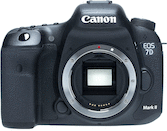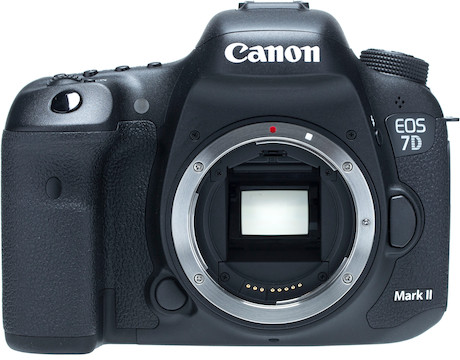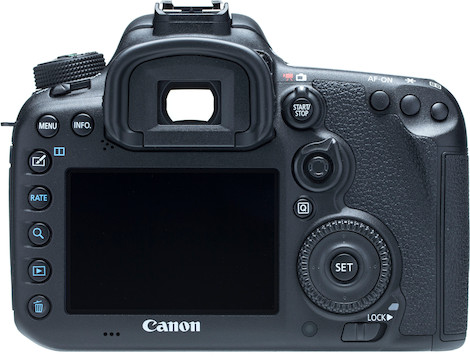The Canon 7D Mark II is the update to the very popular Canon 7D. It’s excellent for sports and wildlife photography. Key features include:
20.2MP APS-C crop-frame sensor with dual DIGIC 6 processors
65-point all cross-type autofocus system
Greatly improved ISO performance
Full HD video at up to 60p
20.2MP APS-C Sensor w/Dual DIGIC 6 Processors. There’s a modest resolution increase with the 7D Mark II over its predecessor, but speed and performance see a big improvement. Not only do the dual processors greatly improved ISO performance, but they also help pump out 10 fps continuous shooting.
65-Point All Cross-Type Autofocus System. This top-of-the-line autofocus system gives sports and wildlife shooters something to be excited about. Its all cross-type autofocus points ensure fast, accurate performance to capture fast-moving subjects, with the center dual cross-type point that supports f/8 lenses and allows autofocus in lighting levels as low as -3EV (that’s -1EV better than both the 1DX and 5D III). Additionally, an improved 150,000-pixel RGB metering sensor brings the iTR focus tracking previously only found in the 1DX, making the 7D Mark II’s autofocus system highly advanced.
Dual Pixel CMOS Autofocus. The 7D II gets an improved version of the Dual Pixel CMOS Autofocus first seen in the 70D, with user-selectable Movie Servo Autofocus Speed and Tracking Sensitivity options this time around. Overall autofocus speed and performance also see improvements when shooting in live-view mode. If you’re not familiar with the Dual Pixel Autofocus system, it provides continuous phase-detection autofocusing while shooting stills and video in live view mode.
HD Video. Like the 7D before it, the Mark II is equally geared towards video recording. With this iteration you see 1080p Full HD recording in multiple frame rates up to 60p. As for recording options, there are three compressions (All-I, IPB, IPB-Lite) and two file formats (MOV and MP4) to choose from for in-camera capture. For more demanding quality, the camera can simultaneously output uncompressed 4:2:2 video via HDMI to an external recorder while recording internally to a memory card. Audio can be captured by the built-in mic or external mic via stereo input, and a dedicated headphone input allows real-time monitoring.
Pro-Level Build Quality. The durable magnesium alloy body features dust and moisture sealing for use in less-than-ideal conditions. The 3.0-inch 1.04m-dot rear LCD works great for image review and composition in live view, while the large optical viewfinder provides 100% coverage. Ergonomically speaking, the 7D II is quite similar to its brother the 5D III; however, the addition of a thumb switch around the multi-controller gives faster ability to switch its operation without menu diving. The pop-up flash offers both fill and off-camera Speedlite control, and a PC sync port allows the use of studio lighting. Dual CF and SDHC/XC memory card slots give users flexible file-management options, and the higher-capacity LP-E6N battery is rated for 670 shots per charge (250 in live view).
Dual Slot Media. The 7D Mark II has support for both SD and CF Cards, making for versatile memory solutions.
Other Notable Features. Here are just a few of the most notable additional features: A built-in intervalometer that gives users the ability to capture time-lapses. An integrated GPS receiver that automatically records location and time in the embedded EXIF data. A flicker-detection system that warns video shooters of potential shutter-speed issues under difficult lighting. Real-time application of lens corrections when shooting video with supported lenses. USB 3.0 connection for fast downloads.
Looking for a File-Transfer Solution? If you’re looking for a wired and wireless file-transfer solution, check out the Canon WFT-E7A Wireless Transmitter.




